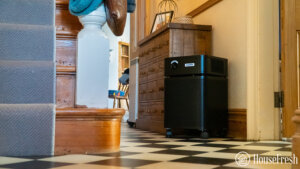Blueair has produced high-performing air purifiers for our homes for over two decades. It all started in 1996 when the company’s President, Bengt Rittri, wanted the same fresh, clean air for his children to breathe indoors as they had outside in the Swedish countryside.
Fast forward to the present day and Blueair is now one of the leading manufacturers of air purifiers worldwide, focusing on using state-of-the-art filter technology, simple operation and designs that reflect their Swedish heritage and innovation.
We wanted to put the Blue Pure 411 and the 411+ together to see if it is worth spending the extra money or if this upgraded unit is simply a marketing ploy to get you to spend more. The only way to find out was to put these two air purifiers side-by-side and see what difference a “+” sign really makes.
TL;DR: Which unit wins overall?

“A clear upgrade on the decent Blue Pure 411, the Blueair Blue Pure 411+ is an easy budget air purifier for those looking to clean a small space like a bedroom and who don’t want something that will create a lot of noise.”
— Danny Ashton, Founder & Senior Writer

We know your time is valuable, so here’s our quick-read pros and cons for each unit. If you want to delve further into our findings, read on for an in-depth look into this battle for clean air.
The pros and cons compared:
| Blueair Blue Pure 411+ | Blueair Blue Pure 411 |
 |  |
| What we really like | What we really like |
| 👍 Customizable color pre-filter 👍 Low noise output even at high fan speed 👍 Simple operation 👍 Filters easy to replace | 👍 Low running costs 👍 Washable pre-filter 👍 One-button operation 👍 Bright and bold color |
| What we think could be better | What we think could be better |
| 👎 No activated carbon pellets 👎 No extra features 👎 No carry handle | 👎 No shell protecting the filter 👎 No timer 👎 No air quality sensor |
The specifications compared side-by-side
Regarding specs, the 411+ is the clear winner with its lighter body weight, larger room coverage and higher cleaning power that cleared our performance testing room of contaminants in only 43 minutes.
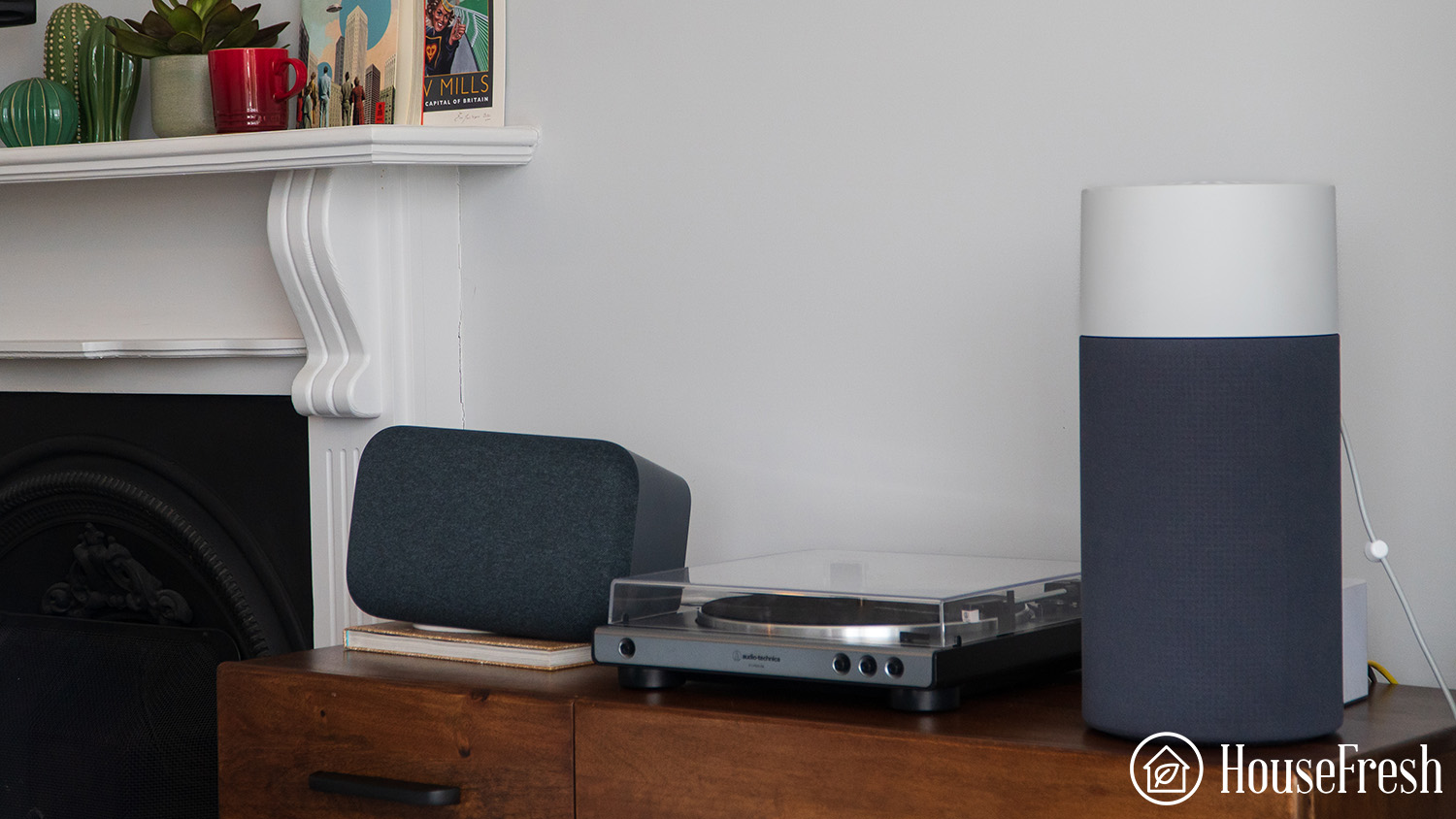
Blueairs’ mission is to produce high-performing air purifiers for the modern home, and with these two units, they’ve succeeded.
While the 411+ retails around $30 more than the 411, it’s worth shelling out those extra dollars for its superior performance. The 411+ is also suited to larger rooms, is a couple of pounds lighter, and is more hardwearing.
| Blueair Blue Pure 411+ | Blueair Blue Pure 411 | |
| HouseFresh rating: | ★★★★☆ | ★★★☆☆ |
| Time to clean our test room: | 43 minutes | 1 hour and 8 minutes |
| Air purifier technology: | Washable pre-filter, activated carbon filter, HEPASilent™ filter | Washable pre-filter, activated carbon filter, HEPASilent™ filter |
| Recommended room size: | 185 sq. ft. | 161 sq. ft. |
| Clean air delivery rate (CADR): | 120 CFM | 120 CFM |
| Dimensions (in inches / in cm): | 17H x 7.8W x 7.8D inches (43.18H x 19.812W x 19.812D cm) | 16.7H x 8W x 8D inches (42H x 20W x 20D cm) |
| Weight (in pounds / in kg): | 3.4 lbs (1.54 kg) | 5.3 lbs (2.4 kg) |
| Filter life: | 6 months | 6 months |
| Noise level (low – high): | 17dB – 46dB | 17dB – 46dB |
| Estimated energy consumption: | $10.51 per year | $10.51 per year |
Design elements compared
When it comes to design aesthetics, the winner is the 411+ due to its protective casing around the filter that the 411 doesn’t have and its magnetic tab that keeps the cable tidy.
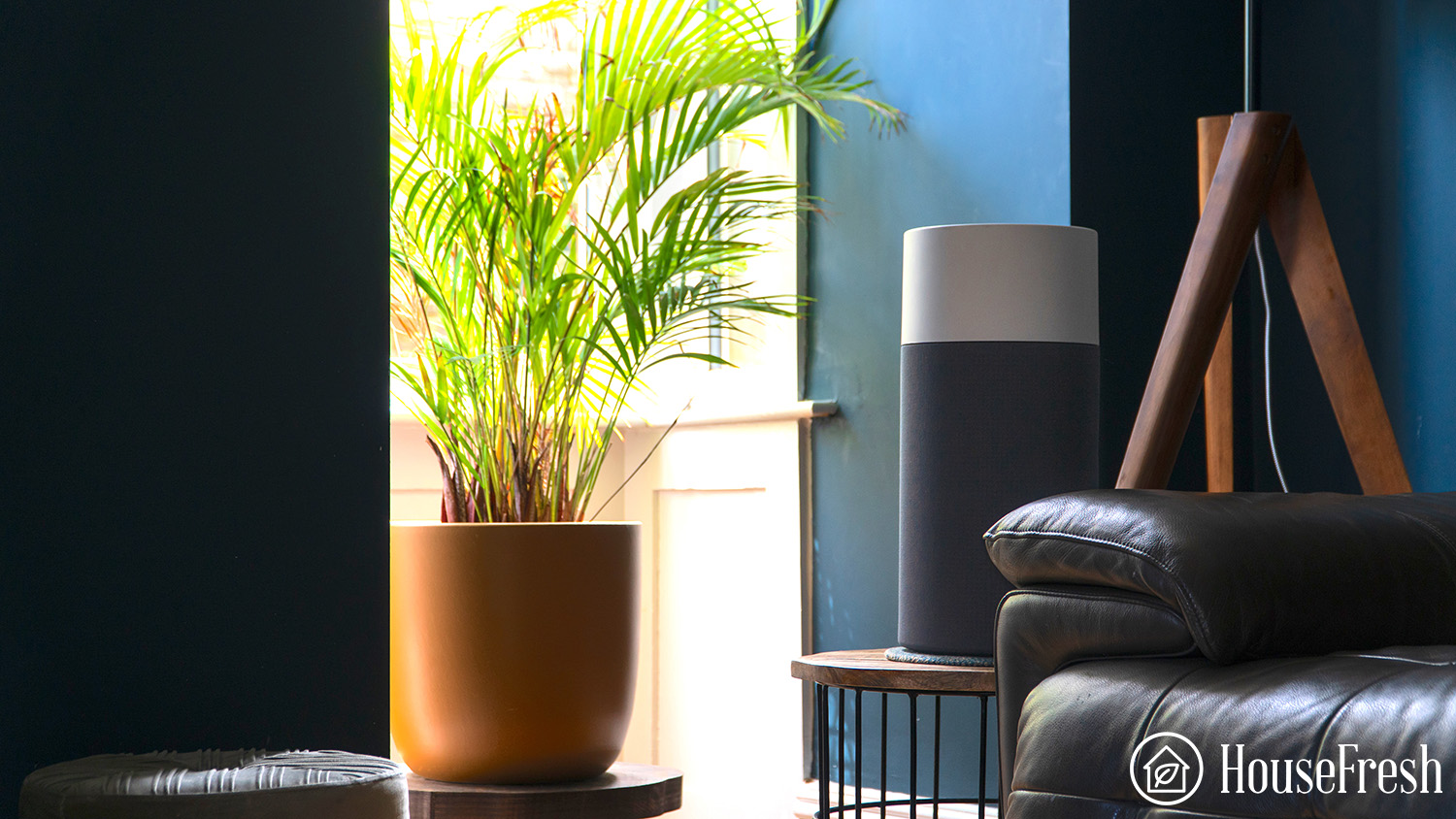
The variations may be subtle with these two units, but the little differences make the 411+ the winner.
First off, one of the things we disliked about the 411 was the exposure of the filter. This meant that the filter could get damaged if it got knocked or you picked it up by the body. Blueair must have thought the same, as they’ve added an outer casing to the 411+ that protects its filter and makes it easier to pick up.
Another minor design feature is the magnetic tab on the 411+. This attaches to the unit’s shell to keep the cable tidy and out of the way.
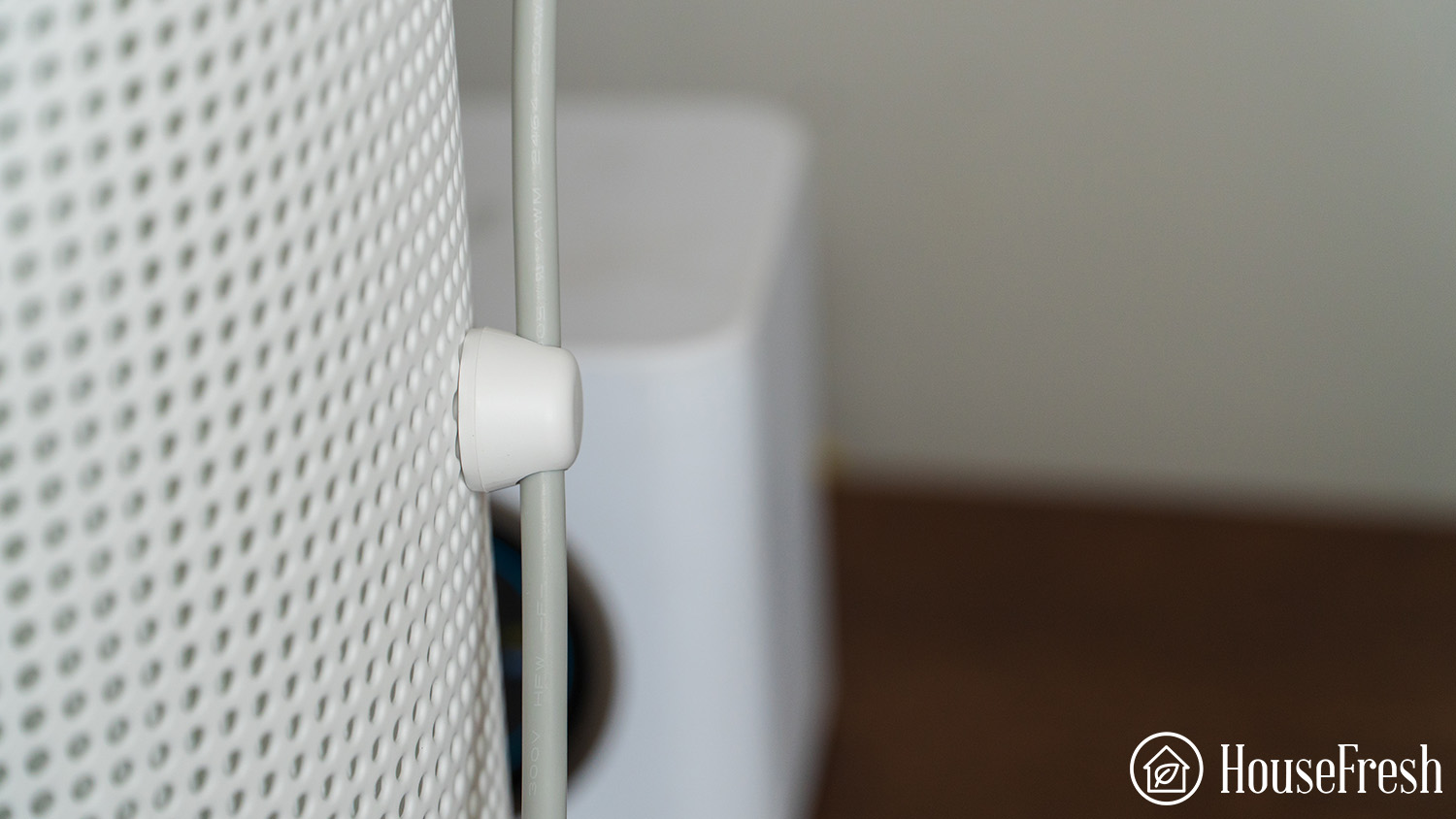
Both units also share many of the same design elements. The top of the circular unit houses the fan and motor and the bottom ⅔ is dedicated to the HEPASilent™ filter. Both units have fabric pre-filters that can be removed and washed (prolonging the life of the HEPA filter).
Blueair has put extra thought into its pre-filter by offering a range of colors to customize your unit to your taste or your home’s decor. The range includes Lunar Rock, Crystal Pink, Dark Shadow, Buff Yellow, Dive Blue and Saffron Red.

Ease of use and control panel design
When it comes to the control panel, the winner has to be 411+. Even though they are very similar, the 411+ looks sleeker, and the button is more sensitive when changing fan speeds.
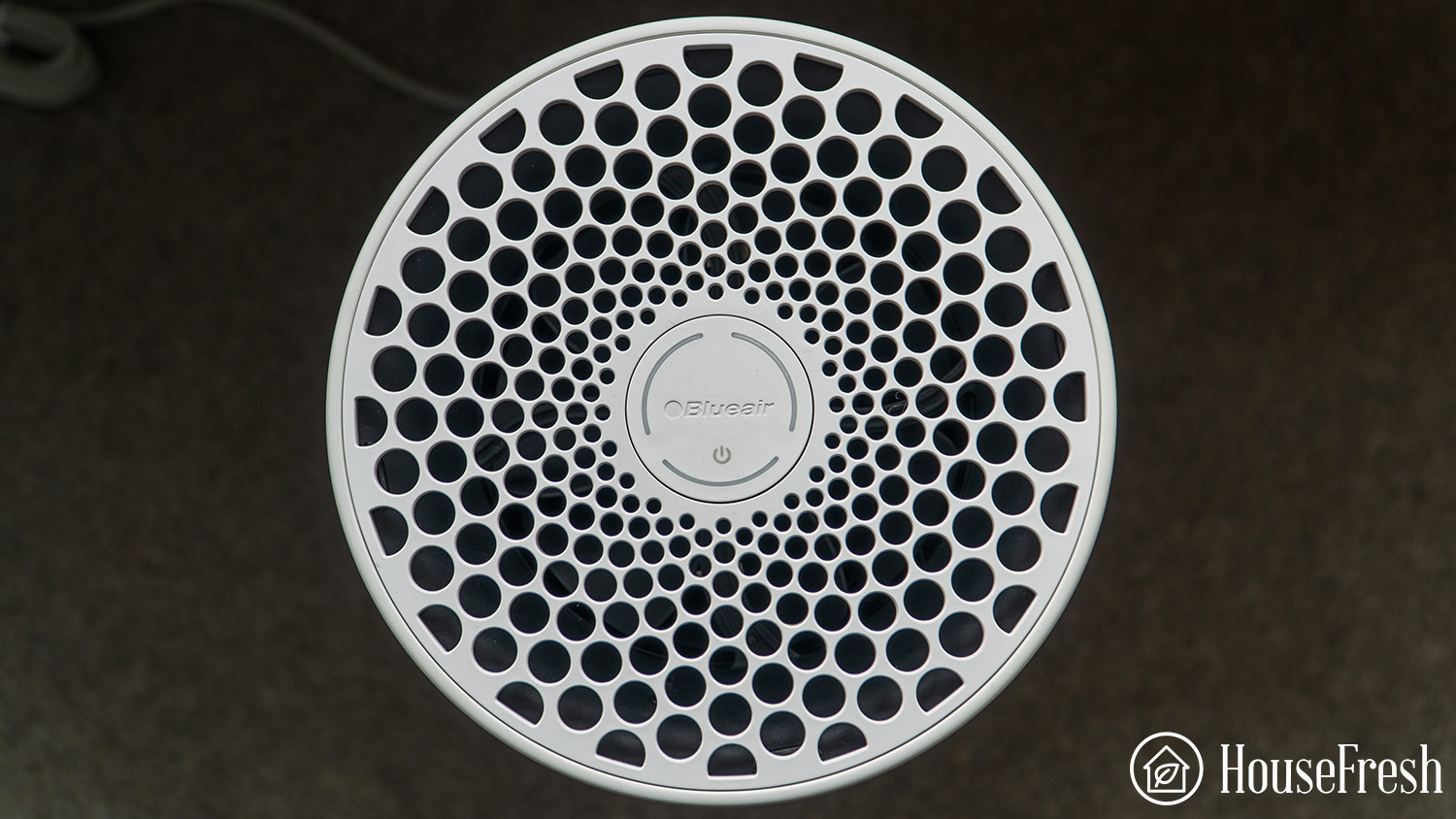
When Blueair upgraded the 411 with the 411+, they kept the unit’s operation the same. One change they did make was a slight branding facelift to the control button. But, for me, that slight change made the difference.
Blueair likes to keep things simple. So simple that they opted for an easy-to-use one-button operation for their Blue Pure series. This means there are no complicated display screens or fingerprint-covered controls, no remotes to lose or apps to download.
With three fan speeds to choose from, Each press of the button cycles through them and turns the air purifier on/off. The button also acts as a filter replacement indicator. When the lights around the button glow red, the air purifier is ready for a new filter.
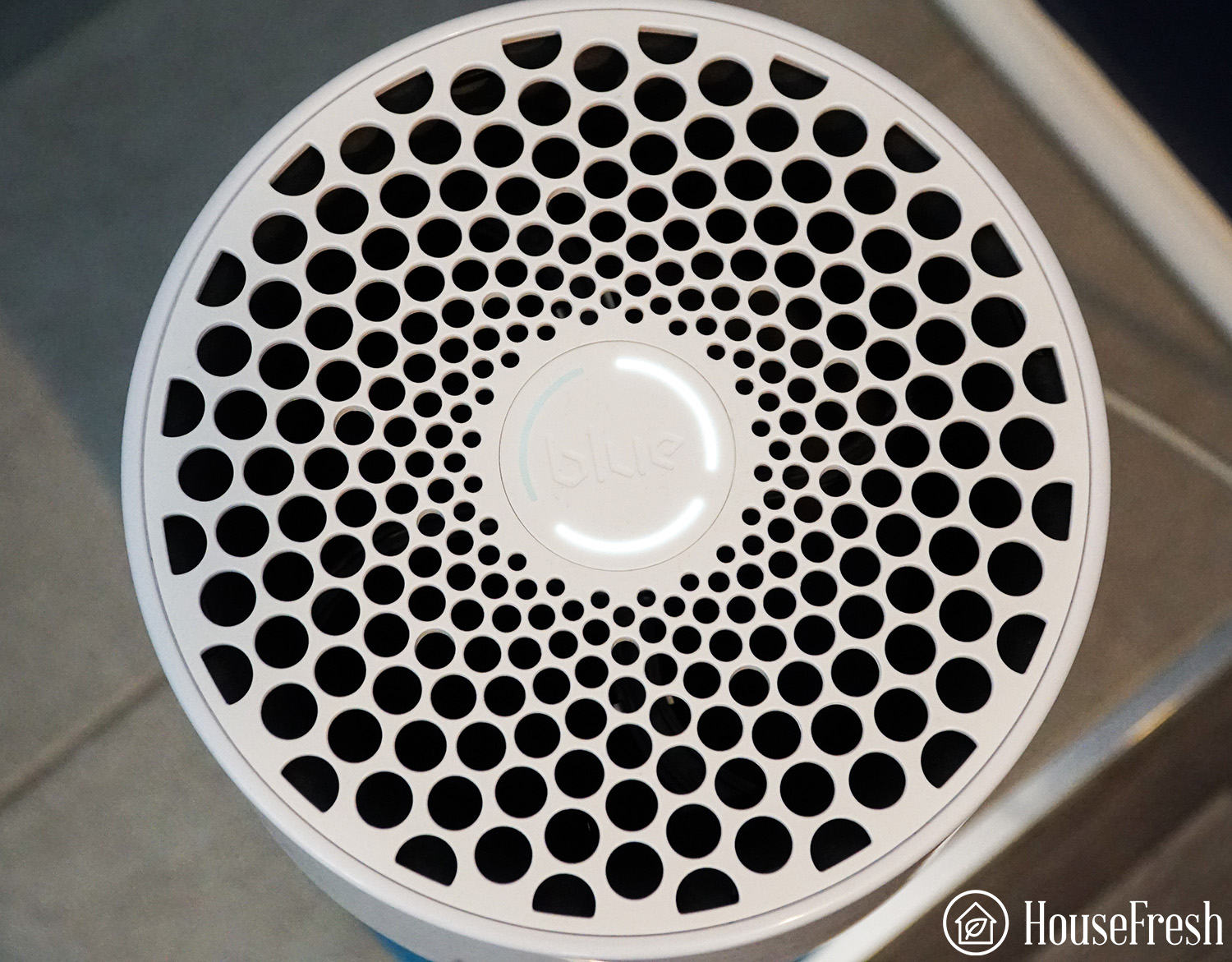
Air filtration technology
Both units use the same Blueair trademarked HEPASilent™ filters, so it’s a draw.
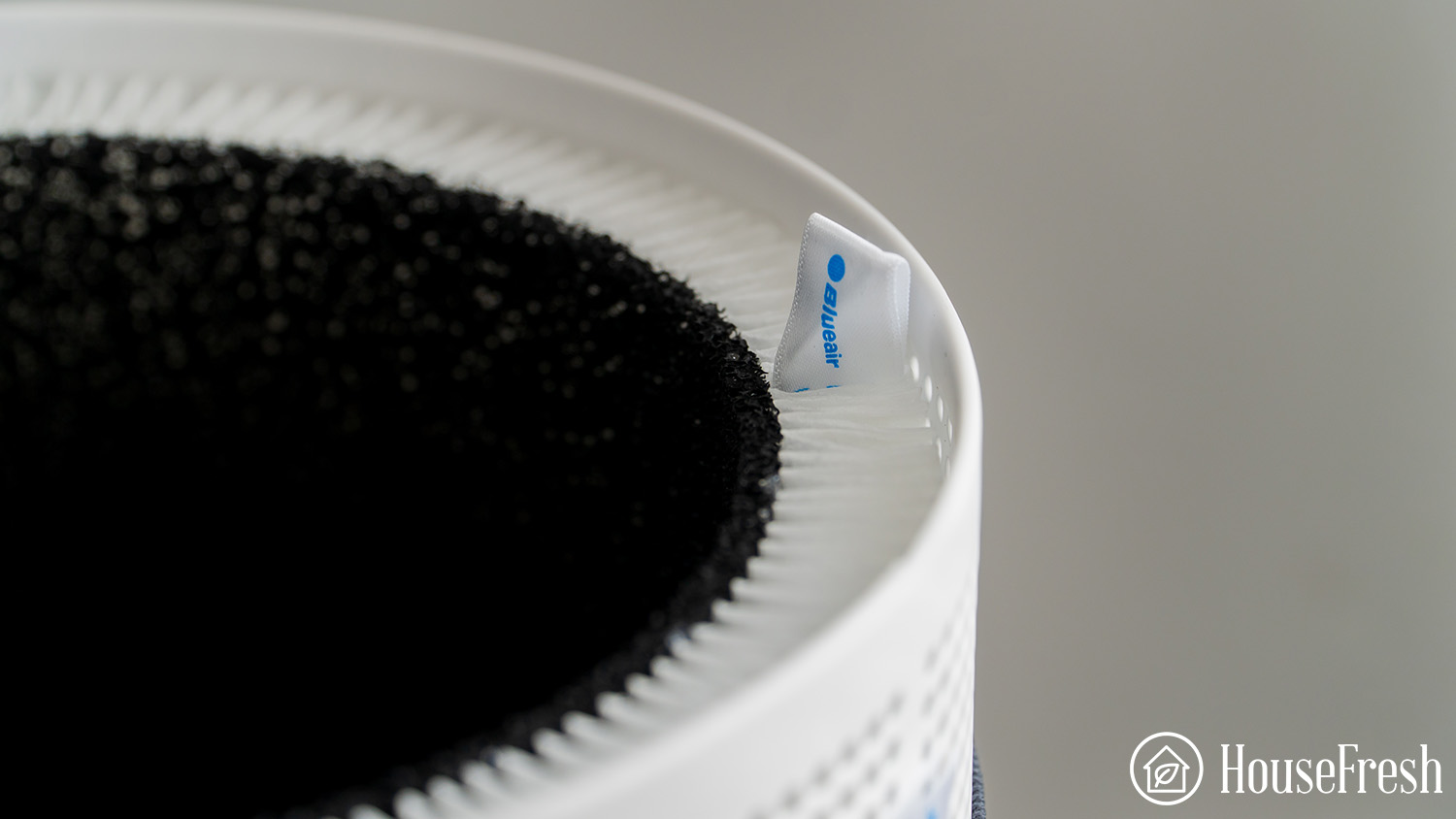
Blueair offers two different filters for the Blue Pure 411 series. Their Particle + Carbon Filter is included as standard, or you can opt for the SmokeBlock Filter. Each of these filters utilize Bluairs’ HEPASilent™ technology, capable of removing 99.97% of harmful particles and pollutants from the air in your home.
They’ve named it HEPASilent™ as it’s specially designed to require less air pressure, which means the motor doesn’t need to work as hard as it needs less energy to pull contaminants in. The less the motor has to work, the quieter the unit is.
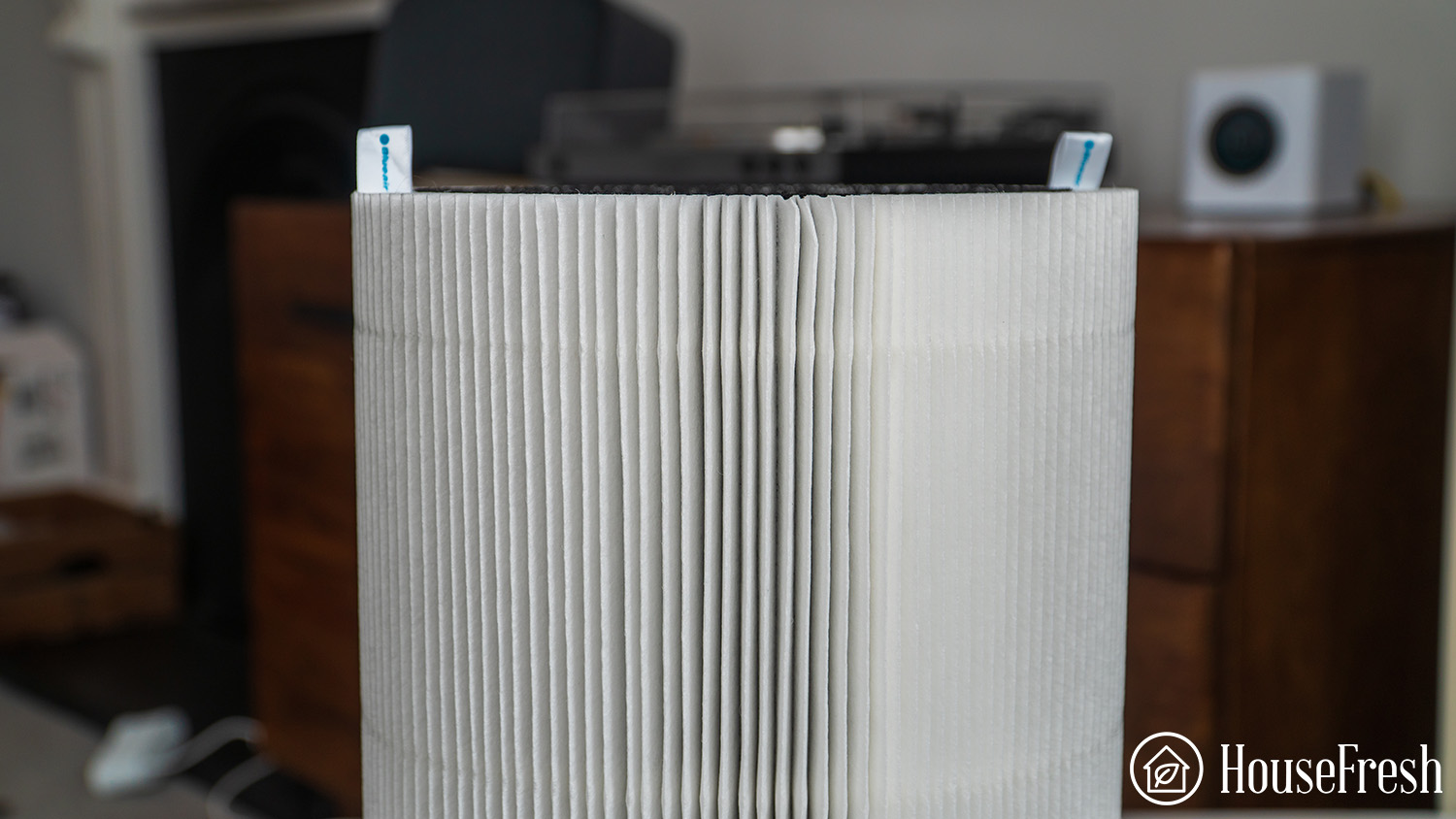
The SmokeBlock version is packed with more activated carbon, which is the ingredient that removes smoke, odors and VOCs (Volatile Organic Compounds) from the air. We recommend you go for this option, especially if you do a lot of cooking, use chemicals or paint on a regular basis or if your air is affected by wildfire smoke.
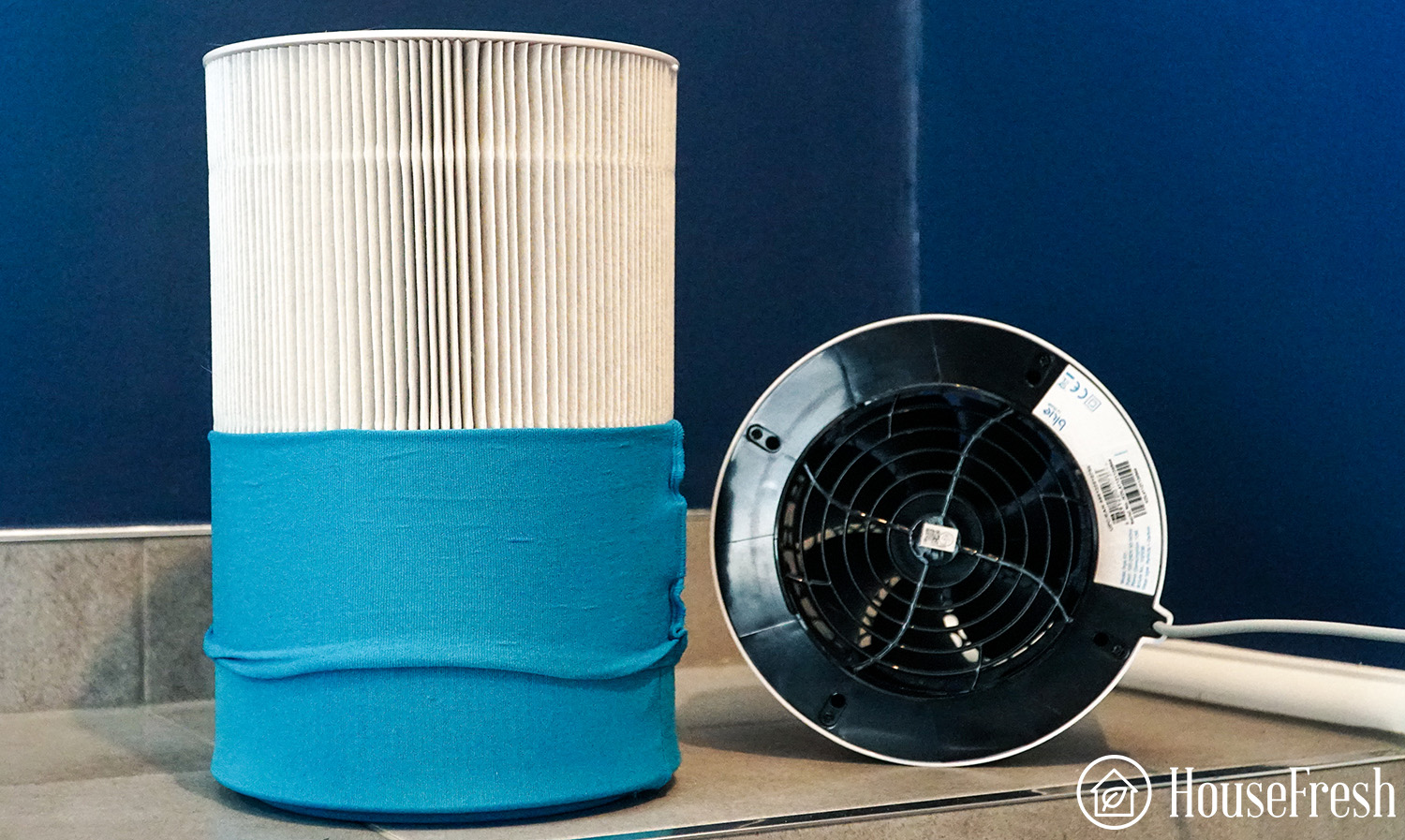
Here is what you can expect from both units when it comes to replacing the filters:
When opening up the box of your new Blueair air purifier, you must twist off the top and remove all of the packaging from the filter before you start using the unit. If you don’t, the filter won’t work, and you will probably begin to notice a foul smell of the plastic packaging burning… not cool.
Air cleaning performance test results, compared
When it comes to air cleaning performance, the 411+ wins hands down. When we put both units through our performance cleaning tests, the 411+ cleared the contaminants from our room 25 minutes faster than the 411.
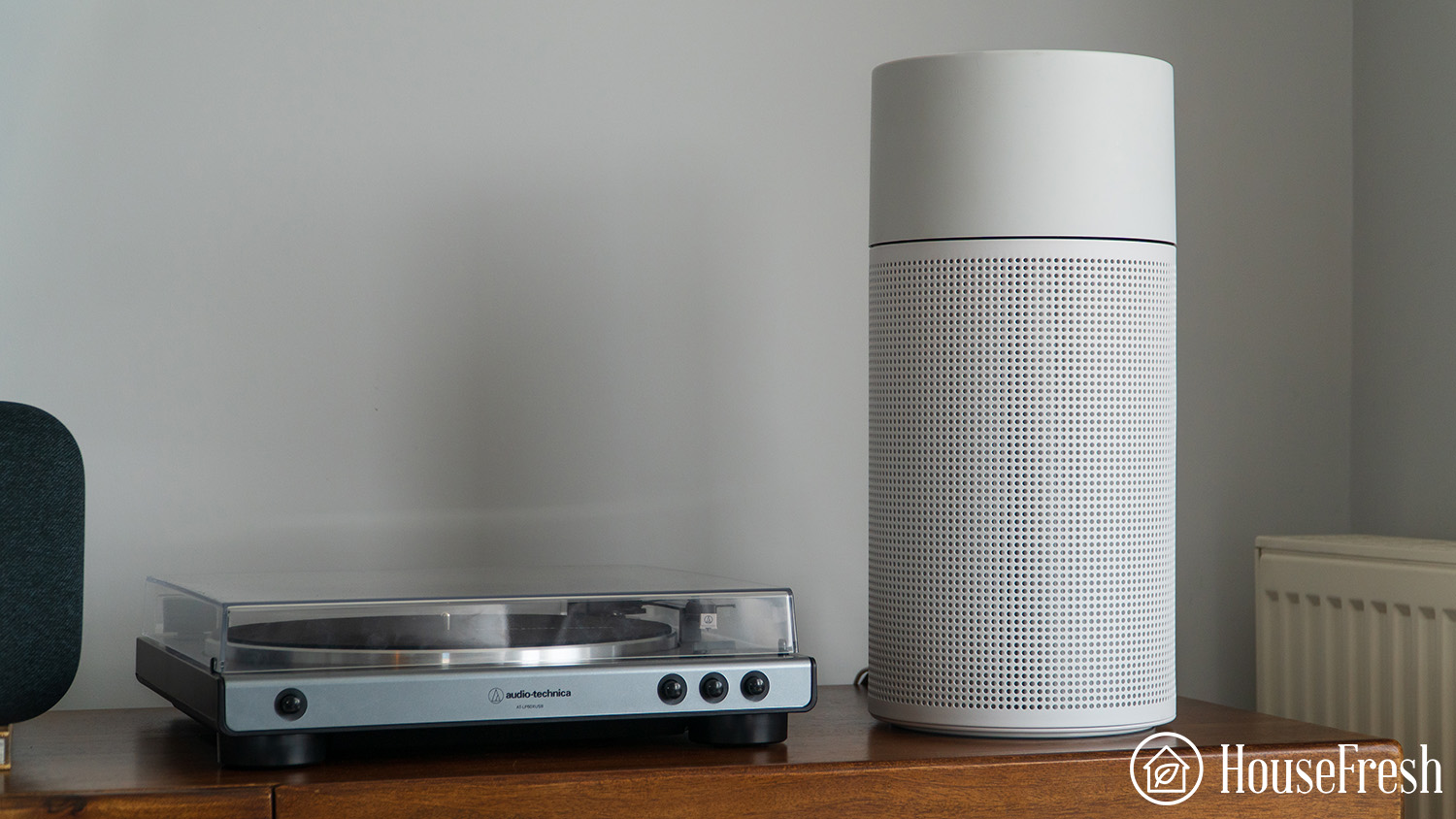
The similarities may be clear, but the differences become more apparent when you analyze each unit’s cleaning performance.
When looking for the right air purifier for your home, cleaning performance should be high on your priorities. Manufacturers usually provide performance data for you, but often, these tests are done in sterile lab conditions…not in a home.
To ensure we get fair, concise results, we test all the air purifiers we review under the same conditions, in a real room, in an actual home…our home.
We conduct all of our performance testing in our 705 cubic foot office that we fill with simulated pollution by lighting an incense stick and letting the smoke fill the room. Once the room is packed with pollutants, we turn the air purifier on at full fan speed and time how long it takes to remove the incense smoke from the air.
We monitor the whole process using our indoor sensor from Purpleair, which gives us updates on PM1.0ug/m3, PM2.5ug/m3 and PM10.0 ug/m3 in real-time so that we can give you the results.

Another reason we gather this performance data is so that we can compare air purifiers side-by-side. In the case of the 411 and 411+, the data we collect will show us if Blueairs’ upgrade is worth the money.
(Hint: It is)
The 411+ cleared our test room in 43 minutes
The 411 cleared our test room in 68 minutes
As you can see from our air cleaning tests, we have a clear winner here with the upgraded 411+, clearing our performance room 25 minutes faster than the standard 411 model.
Because we test the cleaning performance of every air purifier we review, we can compare them side-by-side to see how they perform against the competition.
Both of these units fall a little short when compared to larger units on the market, but that is because they are engineered to be most effective in smaller spaces. While the 411+ cleared our performance testing room faster than average (across all the air purifiers we’ve tested), the 411 proves that it’s a little slow and outdated.
Noise levels test results compared
When it comes to noise levels emitted, the vote is yet again tied as they both emit the same level of sound as each other.
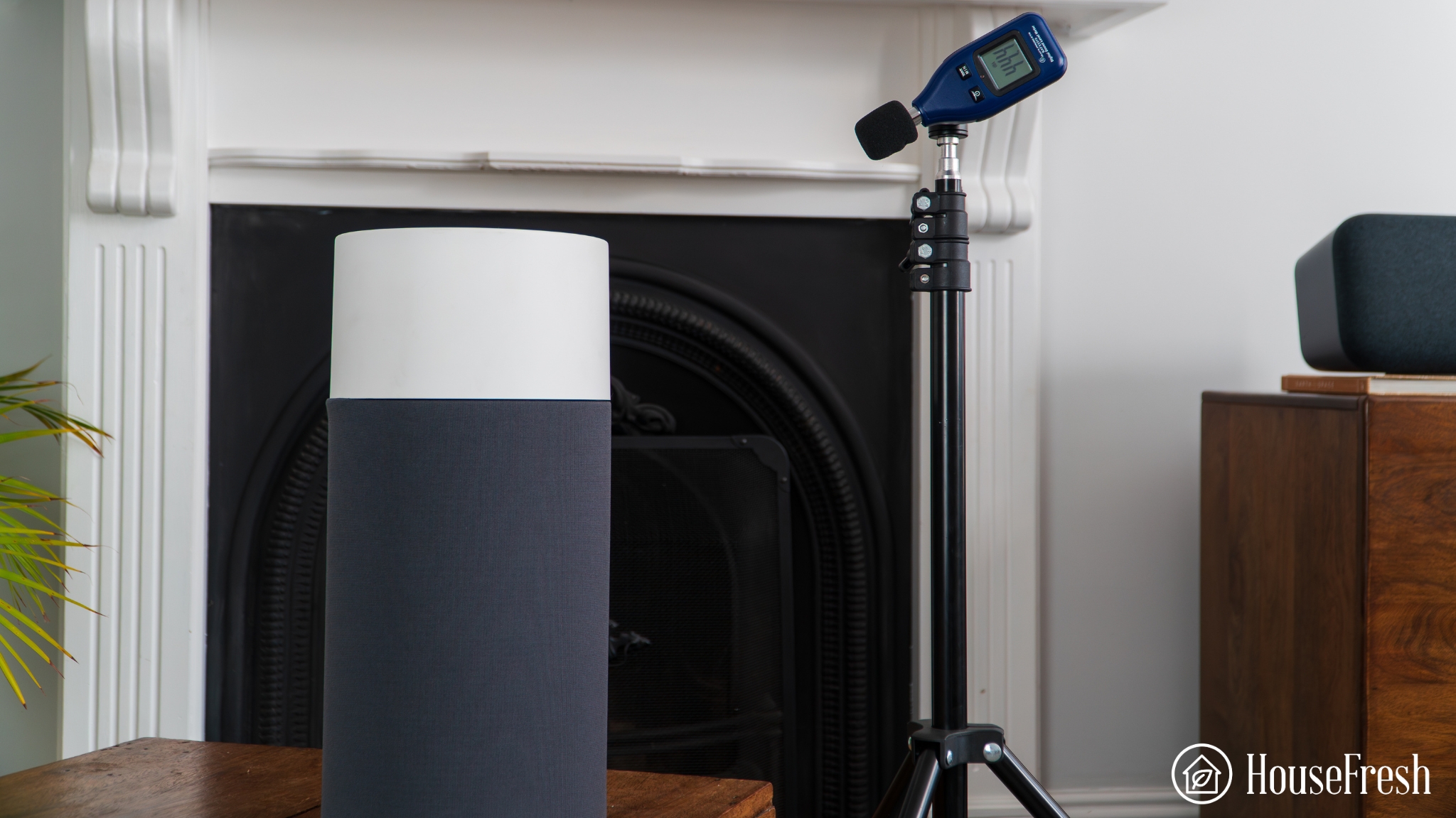
When Blueair released the original 411, they made a quiet unit ideal for bedrooms using their HEPASilent™ technology. Thankfully, they’ve kept this aspect for the 411+.
At their lowest fan speed, both air purifiers emit a whisper-like 17 dB (quieter than a ticking watch), which you’ll hardly notice. Even at its highest fan speed of 46dB (average room noise), they’re quieter than many units on the market.
To show you what we mean, here’s a chart comparing noise levels to other popular units of similar size.
The chart shows that compared to other units of similar size and cleaning power, the 411 and 411+ are quieter. The Levoit Core 300 is louder, producing 24-48dB, as is the TaoTronics AP005, which emits 25-50dB of noise at its lowest and highest fan speeds.
Cost associated with running each air purifier
Even though they use the same filters and the same amount of energy, you need to run the 411 for longer, at higher speeds, using more energy in the long run.
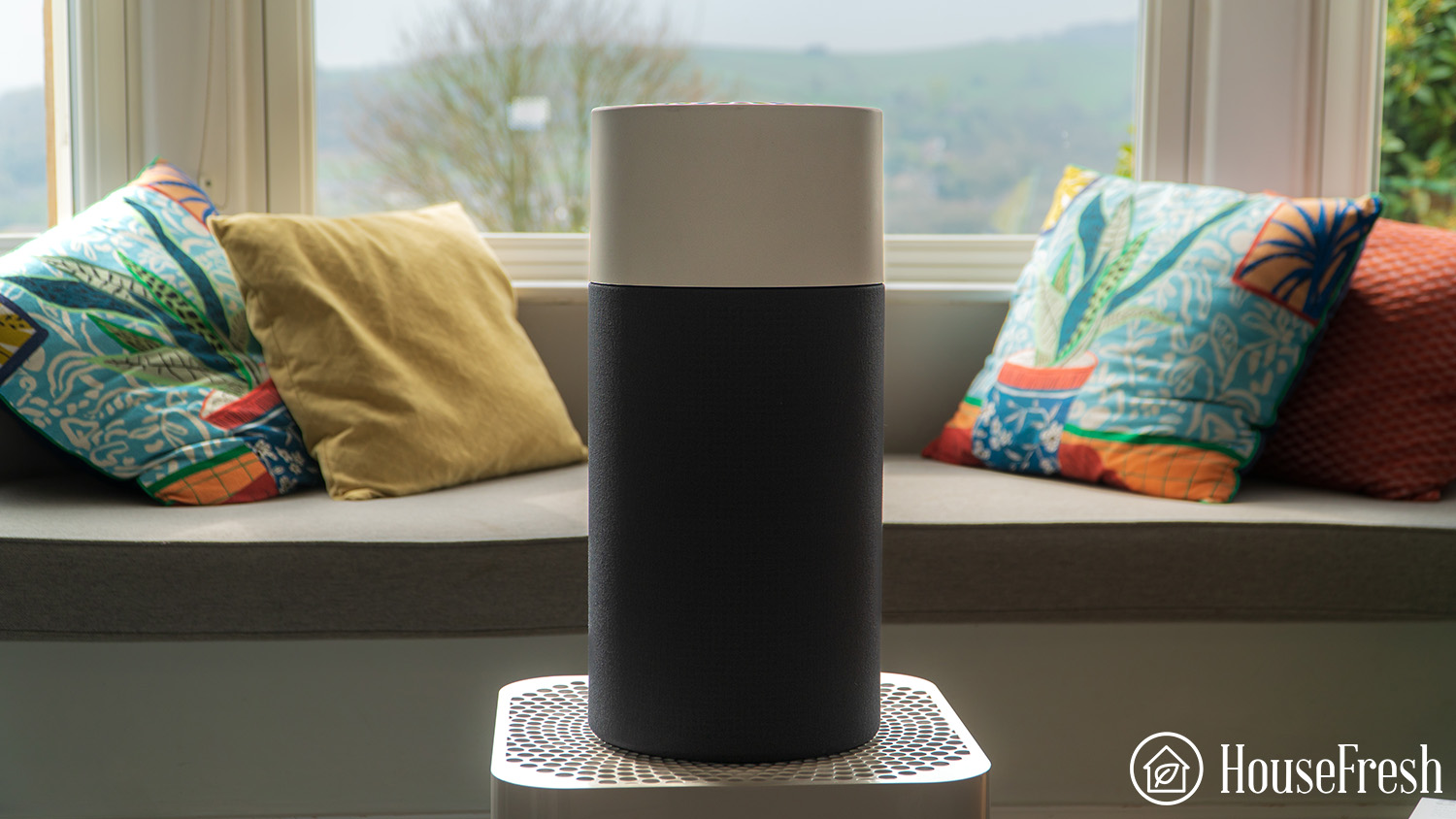
1. Average yearly electricity costs = $10.51 (411+) versus $10.51 (411).
When buying an air purifier, it’s not only the initial cost of the unit you need to consider. Like many other home devices, air purifiers use electricity and electricity costs money (obviously.)
That’s why it’s essential to look at how much energy a unit draws before committing to a purchase as (now more than ever), energy costs rack up over time.
Luckily, Blueair is extremely energy conscious, making each of its units as energy efficient as possible, and these two are no exception. Both the 411 and 411+ need minimal electricity to run thanks to the HEPASilent™ filter and efficient motor.
The 411 loses this section as you’ll need to run it at higher speeds for longer periods than the 411+, which, in turn, will use more energy.
2. Yearly filter costs = $47.98 (411+) versus $47.98 (411+)
Another additional cost to consider when buying an air purifier is the price of replacement filters.
HEPA filters are effective at removing harmful pollutants as they are made up of a maze of tiny fibers that capture particles from the air as it passes through them. Because the particles have nowhere to go when trapped, HEPA filters fill up with them and become less effective over time.
It all depends on how polluted your room is, but on average, Blueair suggests you replace the HEPASilent™ filter every 6 months. You can use Blueair genuine filters or replace them with “unofficial” filters from another brand. The unofficial filters are usually cheaper, but we’ve only tested genuine Blueair filters, so I can’t testify to other brands.
As both air purifiers use the same filter replacements, the cost is the same.
Bottom Line: Should you get a Blueair Blue Pure 411+ or a 411?
The Blueair 411+ and the 411 are not that different from one another, so which model wins overall?
✅ If you want a quiet, high-performing and modern-designed air purifier for your bedroom or home office — go for the 411+.
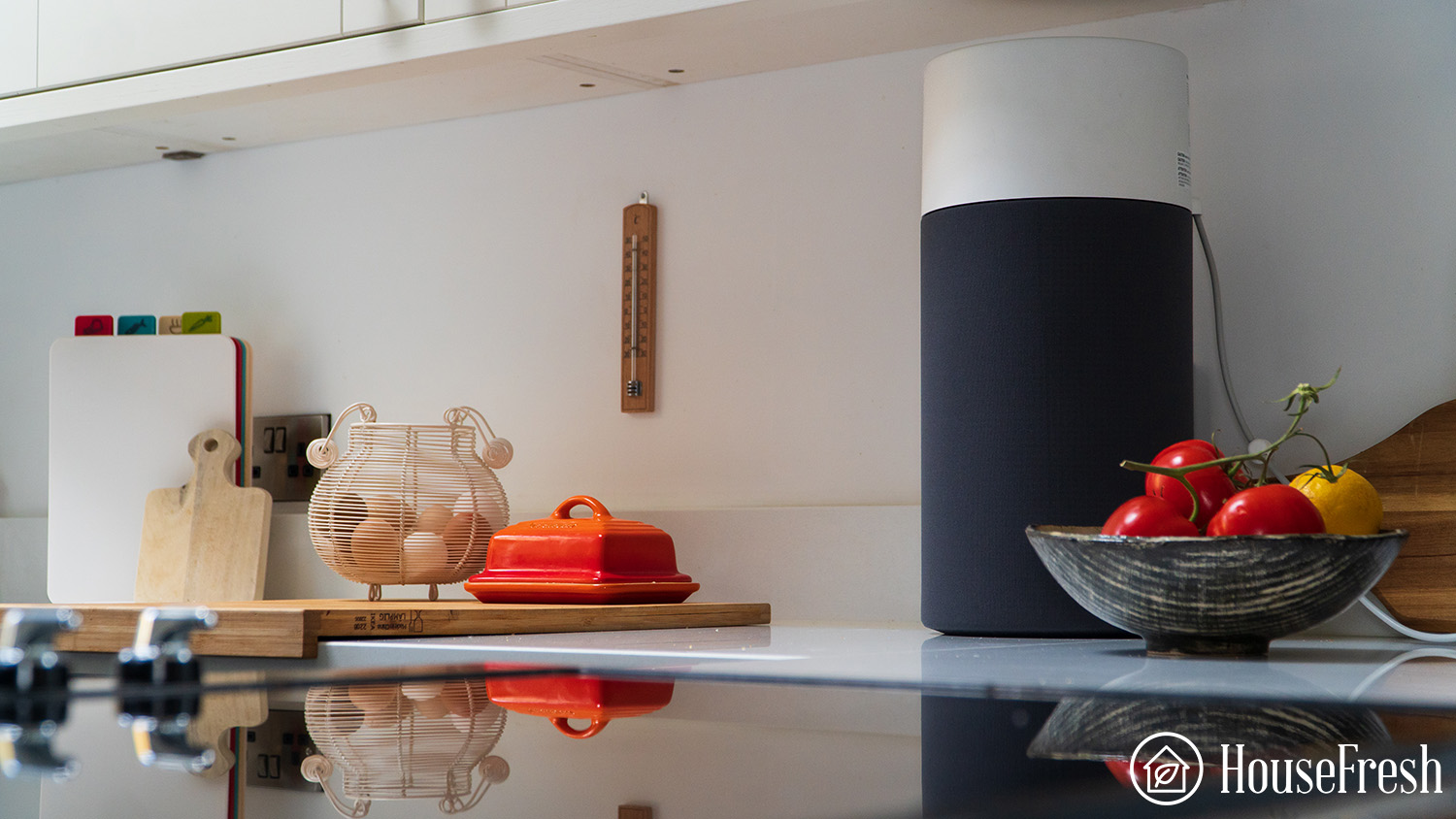
✅ If you want to save a small amount of cash — go for the 411.
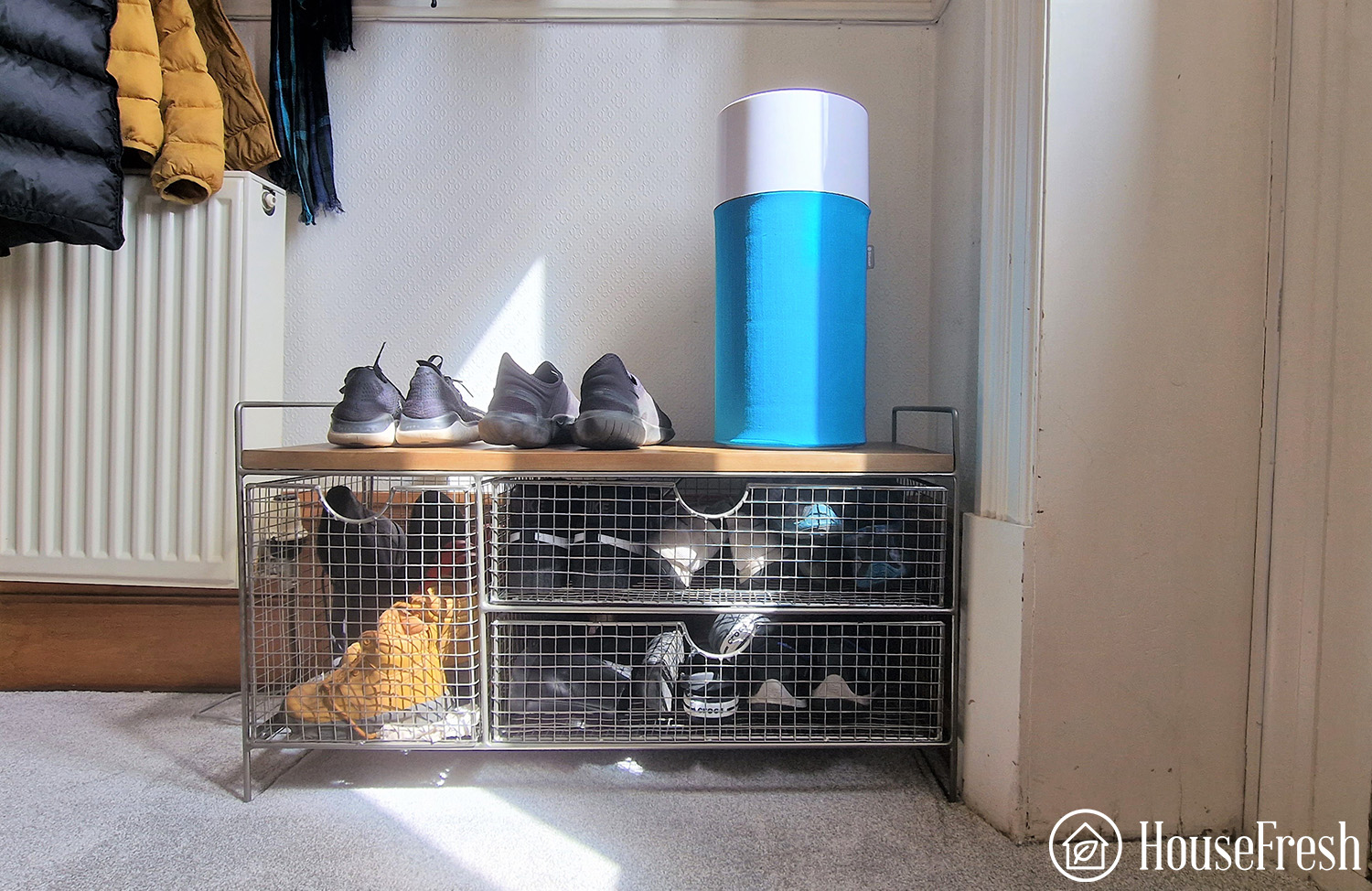
This was a pretty easy battle. The data doesn’t lie. The 411 has been left obsolete with the introduction of its upgrade, the 411+. It may share many of the same attributes as its predecessor, but its cleaning performance surpasses the older model.
SOURCES
We calculated the monthly energy consumption costs with the help of the Department of Energy’s appliance energy calculator. We calculated yearly costs associated with running both units for 24 hours a day for 365 days. We ran this calculation utilizing the U.S. average utility rate of $0.12/kWh as of October 6th, 2023.
Last update on 2024-04-27 / Affiliate links / Images from Amazon Product Advertising API




